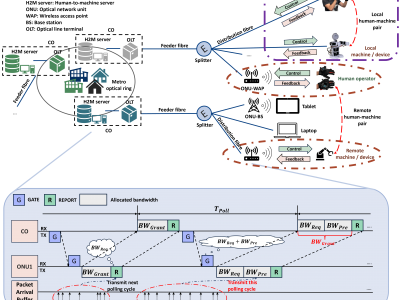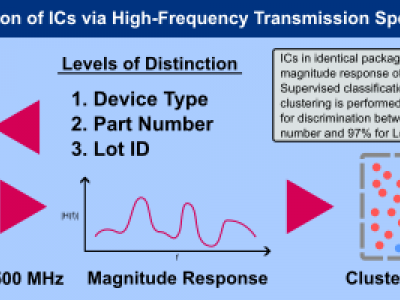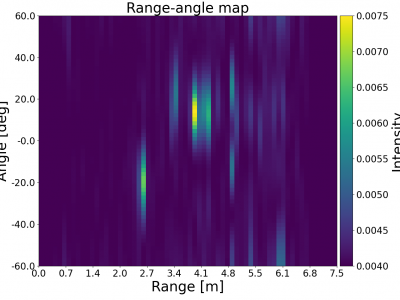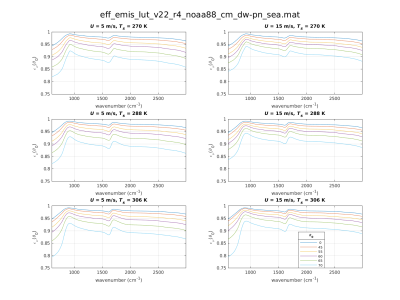*.mat (Matlab)
<p>The uploaded datasets contain packet arrival times from six distinct human-to-machine (H2M) applications for traffic modeling collected from a VR-based H2M experimental platform. The master device comprises VR gloves, each with two orientation sensors on the thumb and wrist (9-DOF) and five flexible sensors per finger for movement and force tracking. The sensors sample at 200 Hz, transmitting control signals via a customized Bluetooth interface (30 m range). Each control instance has 93 elements.
- Categories:
 120 Views
120 ViewsHigh-frequency transmission spectroscopy (HFTS) is a novel technique for the classification of a wide range of materials in biomedical, environmental, security, and manufacturing domains. HFTS is based on the fusion of scattering parameter measurements and machine learning classification techniques to identify materials of interest in novel environments. This work seeks to demonstrate the efficacy of HFTS in the domain of integrated circuit classification.
- Categories:
 105 Views
105 Views
This dataset contains still thermal frames from thirty patients undergoing awake craniotomy for brain tumor resection. The data were used as part of a study on automated craniotomy masking, where the portion of the craniotomy image which contans the brain is identified. The data contains manually generated gold-standard masks, as well as masks created with the proposed method in "Automated Craniotomy Masking for Intraoperative Thermography".
- Categories:
 87 Views
87 ViewsIn our work, we propose an innovative system to accurately infer and track occluded target locations using mmWave beat frequency signals. Our approach combines a classic direction-finding method with advanced deep learning techniques, specifically a convolutional neural network (CNN), to enhance detection capabilities. The dataset includes raw beat frequency signal data from the TI IWR6843ISK rev B with TI mmWAVEICBOOST and the TI DCA1000EVM capture board. Corresponding ground truth data (target position) from the Realsense L515 RGB-D camera is also provided.
- Categories:
 407 Views
407 Views
Current neural network solutions for channel estimation are frequently tested by training and testing on one example channel or similar channels. However, data-driven algorithms often degrade significantly on other channels which they are not trained on, because they cannot extrapolate their training knowledge. Online training can fine-tune the offline-trained neural networks to compensate for this degradation, but its feasibility is challenged by the tremendous computational resources required.
- Categories:
 188 Views
188 ViewsThis is an auditory attention decoding dataset including EEG recordings of 21 subjects when they were instructed to attend to one of the two competing speakers at two different locations.
Unlike previous datasets (such as the KUL dataset), the locations of the two speakers are randomly drawn from fifteen alternatives.
All subjects have given formal written consent approved by the Nanjing University ethical committee before the experiment and received financial compensation upon completion.
- Categories:
 802 Views
802 ViewsIn this dataset, we conducted a spectrum monitoring experiment in an urban environment. The helikite flies up to an altitude of 400 feet throughout the day from noon to 9 p.m. during NC State’s Packapalooza festival in August, 2022. The spectrum is swept up to 6 GHz. Every sweep takes around 1 minute, while after every 4 measurements, the 5th measurement takes close to 5 minutes due to another data collection activity running in parallel. The photo of a flying Helikite at the experiment site is shown in the dataset image.
- Categories:
 362 Views
362 ViewsThermal infrared (IR) environmental satellite data assimilation and remote sensing of the surface and lower troposphere depend on accurate specification of the spectral surface emissivity within clear-sky forward calculations. Over ocean surfaces, accurate modeling of surface-leaving radiances over the sensor scanning swaths is complicated by a quasi-specular bidirectional reflectance distribution function (BRDF).
- Categories:
 200 Views
200 Views
Reconfigurable intelligent surfaces (RIS) are a core component considered in sixth generation (6G) communications. By utilizing an RIS prototype system in the 5 GHz band, this paper provides a comprehensive dataset of S21 channel measurements of various geometric arrangements of antennas and RIS. The dataset is provided in full on IEEE DataPort. Additionally, the in-detail documentation of the measurement setup, location, devices, geometries, and algorithms is available on GitHub.
- Categories:
 1484 Views
1484 Views




